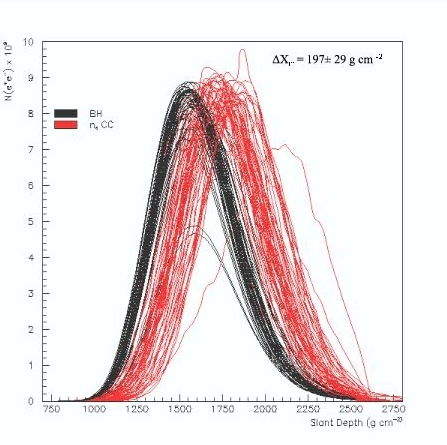Ultrahigh-energy cosmic ray protons are generated from various extra galactic sources (such as supermassive black holes, active galactic nuclei, etc). They have a tremendous amount of energy (cosmic rays with energy above 1020 eV have been observed). These protons interact with cosmic microwave background photons to produce ultrahigh-energy neutrinos, called cosmogenic neutrinos. These cosmogenic neutrinos, interacting with nucleons in the atmosphere, may produce miniature black holes; for sufficiently small impact parameters the colliding particles may "enter" a spacetime with more than three spatial dimensions, where gravity is no longer weak a force.


 To Run your Own Shower!
To Run your Own Shower!